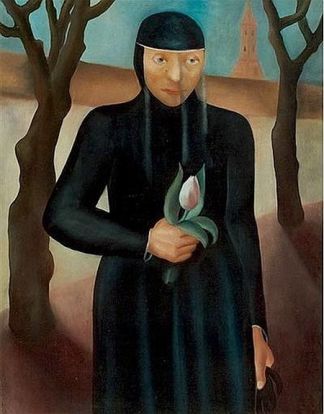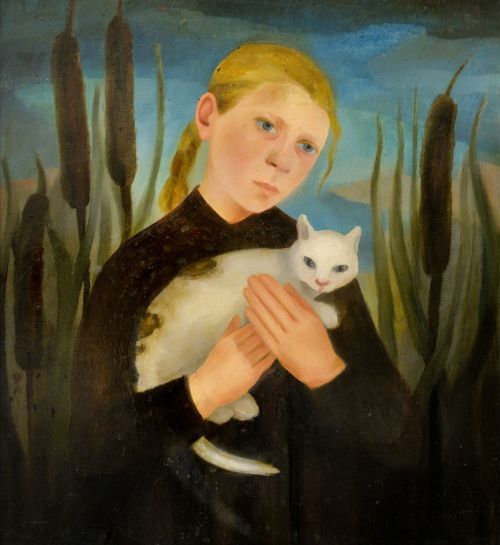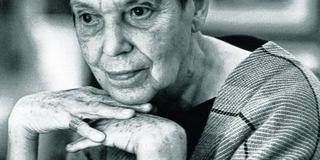Fernando Botero

Fernando Botero
More Posts from Art0634 and Others

André Lhote (1885 - 1962)
La Vallée du Célé or Paysage du Lot
signed A. LHOTE (lower left)
oil on canvas
98,5 x 99,4 cm; 38¾ x 39⅛ in.
Painted in 1912.

Martyr Hill
Artist: O Louis Guglielmi (American, 1906-1956)
Date: c. 1933-1934
Medium: Oil on canvas
Collection: Smithsonian American Art Museum, Washington, DC, United States
Description
The eerie loneliness of Louis Guglielmi's painting Martyr Hill seems surreal. Yet the Grand Army of the Republic Hall in Peterborough, New Hampshire, actually looks much as it does in this painting. Guglielmi, who spent many summers at the MacDowell artist colony in Peterborough, knew the place well. He altered the scene slightly but effectively to create an uneasy, melancholy mood reflecting the troubles of the time.
Sweeping diagonal lines draw the viewer's attention to the GAR Hall, with its spiky finials and a cannon aimed to menace the viewer. In fact, the cannon stands on the opposite side of the hall’s lawn. Guglielmi removed the windows from the hall’s side wall, creating the solid red parallelogram he placed very near the dark front wall of the house in the foreground. This causes the eye to lurch disconcertingly from foreground to background. Nothing in the painting casts a shadow - the buildings therefore look oddly insubstantial. The sculpted bronze soldier on the Civil War Memorial, his head bent in sorrow, underlines the lack of a living person in the scene. The Nubanusit River flows under a bridge and out toward the viewer, who is left with no place to stand.





Kate Diehn-Bitt (German, 1900-1978)
An automatic translation:“Born in Schöneberg near Berlin in 1900, Kate (originally: Käthe) Diehn-Bitt was a middle-class daughter. Her training took place exclusively in various private art schools; After early marriage and the birth of her son in 1920, she began studying at the – again – private art academy in Dresden in 1929–31, where Woldemar Winkler (1902–2004) became her teacher, who later described her as “a very clever one , very self-confident, emancipated personality”. The Dresden art scene around Otto Dix, Otto Griebel and others must have been as impressive for Diehn-Bitt as the political atmosphere in the city.
Back in Rostock, she set up her first studio in 1933; In 1935 she exhibited together with the sculptor Hertha von Guttenberg in the gallery of Wolfgang Gurlitt in Berlin - it would take until 1948 until another exhibition is dedicated to her in Schwerin.
During the Nazi era, Kate Diehn-Bitt’s stepfather, Dr. Leo Glaser persecuted as a Jew; she herself and her work were deemed “foreign”. After the end of the war, Diehn-Bitt was initially involved in cultural policy in the newly founded GDR, but after being sentenced to paint “not in a forward-looking or optimistic manner”, she withdrew from all functions in the 1950s and died in Rostock in 1978. All of the political-historical upheavals of the 20th century in Germany can be seen in her biography and work.”
https://www.kulturstiftung.de

Josep Royo (Spanish, b. 1945) - Untitled, Mixed media on paper, 70 x 50 cm (2006)

Franz Marc (German, 1880 - 1916) • Small Composition • c. 1914

Olivier Stéphane 2024

Etel Adnan

by Karen Mathison Schmidt

Jean Dubuffet
Le malentendu
-
 colourfulartanddesign liked this · 1 month ago
colourfulartanddesign liked this · 1 month ago -
 chat-et-tortue liked this · 2 months ago
chat-et-tortue liked this · 2 months ago -
 philo-soph-y liked this · 2 months ago
philo-soph-y liked this · 2 months ago -
 viniszpereira liked this · 2 months ago
viniszpereira liked this · 2 months ago -
 zen-archive03 liked this · 3 months ago
zen-archive03 liked this · 3 months ago -
 32127 reblogged this · 3 months ago
32127 reblogged this · 3 months ago -
 miguelhks777 reblogged this · 3 months ago
miguelhks777 reblogged this · 3 months ago -
 11071995 reblogged this · 3 months ago
11071995 reblogged this · 3 months ago -
 in-limbo-while-lucid reblogged this · 3 months ago
in-limbo-while-lucid reblogged this · 3 months ago -
 come2life2000 reblogged this · 3 months ago
come2life2000 reblogged this · 3 months ago -
 neonorange1111 reblogged this · 3 months ago
neonorange1111 reblogged this · 3 months ago -
 1605001 reblogged this · 4 months ago
1605001 reblogged this · 4 months ago -
 nightmar-y reblogged this · 4 months ago
nightmar-y reblogged this · 4 months ago -
 somestupidsworld liked this · 5 months ago
somestupidsworld liked this · 5 months ago -
 bloggingforpatrick liked this · 5 months ago
bloggingforpatrick liked this · 5 months ago -
 urineoff reblogged this · 5 months ago
urineoff reblogged this · 5 months ago -
 christiandiorhypnoticpoison reblogged this · 5 months ago
christiandiorhypnoticpoison reblogged this · 5 months ago -
 johnmyersart liked this · 5 months ago
johnmyersart liked this · 5 months ago -
 p1325 reblogged this · 5 months ago
p1325 reblogged this · 5 months ago -
 p1325 liked this · 5 months ago
p1325 liked this · 5 months ago -
 pascal-martoon-tresvil reblogged this · 5 months ago
pascal-martoon-tresvil reblogged this · 5 months ago -
 pascal-martoon-tresvil liked this · 5 months ago
pascal-martoon-tresvil liked this · 5 months ago -
 mayan-warrior liked this · 5 months ago
mayan-warrior liked this · 5 months ago -
 smoochiezzz2 reblogged this · 5 months ago
smoochiezzz2 reblogged this · 5 months ago -
 the-studio-wall reblogged this · 5 months ago
the-studio-wall reblogged this · 5 months ago -
 sanjogsonsand liked this · 5 months ago
sanjogsonsand liked this · 5 months ago -
 dcapilla3 reblogged this · 5 months ago
dcapilla3 reblogged this · 5 months ago -
 dcapilla3 liked this · 5 months ago
dcapilla3 liked this · 5 months ago -
 smoochiezzz2 liked this · 5 months ago
smoochiezzz2 liked this · 5 months ago -
 gjyvenachii77 reblogged this · 5 months ago
gjyvenachii77 reblogged this · 5 months ago -
 gjyvenachii77 liked this · 5 months ago
gjyvenachii77 liked this · 5 months ago -
 umecker liked this · 5 months ago
umecker liked this · 5 months ago -
 qg3 reblogged this · 5 months ago
qg3 reblogged this · 5 months ago -
 brentgodfrey liked this · 5 months ago
brentgodfrey liked this · 5 months ago -
 snowangelsoul liked this · 5 months ago
snowangelsoul liked this · 5 months ago -
 barneysnudeyork reblogged this · 5 months ago
barneysnudeyork reblogged this · 5 months ago -
 barneysnudeyork liked this · 5 months ago
barneysnudeyork liked this · 5 months ago -
 cep777 liked this · 5 months ago
cep777 liked this · 5 months ago -
 jerryleekarsun liked this · 5 months ago
jerryleekarsun liked this · 5 months ago -
 art0634 reblogged this · 5 months ago
art0634 reblogged this · 5 months ago -
 art0634 liked this · 5 months ago
art0634 liked this · 5 months ago -
 rdeanjr liked this · 5 months ago
rdeanjr liked this · 5 months ago -
 tigerrtrapp reblogged this · 5 months ago
tigerrtrapp reblogged this · 5 months ago -
 adonis66 reblogged this · 5 months ago
adonis66 reblogged this · 5 months ago -
 s-pinkk liked this · 5 months ago
s-pinkk liked this · 5 months ago -
 xlij reblogged this · 5 months ago
xlij reblogged this · 5 months ago -
 guttrman liked this · 5 months ago
guttrman liked this · 5 months ago -
 in-kind reblogged this · 5 months ago
in-kind reblogged this · 5 months ago